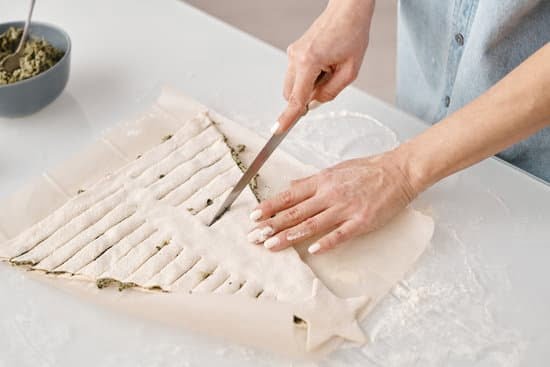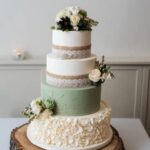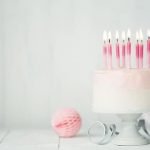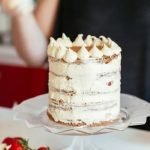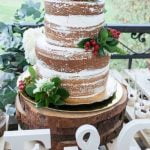Are you ready to take your cake decorating skills to the next level? Whether you’re a seasoned baker or just starting out, this article will guide you through the step-by-step process of easy cake decoration. From choosing the perfect cake as your canvas to mastering essential techniques and adding flair with fondant, we’ll cover everything you need to know to create stunning and delicious works of art.
Cake decoration is more than just a finishing touch; it is an opportunity for self-expression and creativity. A beautifully decorated cake can be the centerpiece of any celebration, bringing joy and delight to both the creator and those lucky enough to savor it. With some basic tools, a little practice, and a whole lot of imagination, you can elevate your cakes from simple desserts to edible masterpieces.
In this article, we will explore why cake decoration matters and how it can transform even the most ordinary treats into extraordinary creations. We’ll also discuss the importance of choosing the right cake as your canvas, as well as the essential tools and materials you’ll need to get started. So let’s dive in and discover how easy it is to decorate a cake that not only looks impressive but tastes amazing too.
Choosing the Perfect Cake
When it comes to cake decoration, choosing the right cake is essential. The cake serves as the canvas for your design, and finding the perfect one can make a huge difference in the overall outcome of your decorated cake. Here are some key factors to consider when choosing the perfect cake for your design:
Flavor and Texture
First and foremost, consider the flavor and texture of the cake. It’s important to choose a cake flavor that not only complements your design but also pleases your taste buds. Vanilla, chocolate, and red velvet are popular choices that work well with a variety of decorations. Additionally, pay attention to the texture of the cake. A moist and dense cake provides a sturdy base for more intricate designs, while lighter cakes may be better suited for simpler decorations.
Size and Shape
The size and shape of the cake should also align with your design vision. If you have a specific design in mind, choose a shape that allows you to execute it effectively. For example, round cakes are versatile and ideal for creating tiered designs or adding floral decorations. Square cakes offer clean lines and are great for geometric patterns or themed cakes.
Icing Compatibility
Consider how well your chosen icing will adhere to the type of cake you select. Buttercream icing works well on most types of cakes due to its creamy texture and ability to hold its shape when piped. However, if you’re planning to use fondant as your main decorating medium, a denser cake like pound cake or sponge cake is better suited as it can support the weight of the fondant without collapsing.
Essential Tools and Materials
To begin your cake decorating journey, it is crucial to have the right tools and materials. Here is a list of essential items you’ll need to get started:
- Cake Decorating Set: Invest in a good quality cake decorating set that includes piping bags, couplers, and various tips. These tools will allow you to create different designs and textures on your cake.
- Offset Spatula: An offset spatula is an indispensable tool for smoothing icing and spreading it evenly on the cake’s surface. It also helps in creating clean edges and corners.
- Bench Scraper: A bench scraper is useful for leveling the icing on the sides of the cake, creating straight lines, and smoothing out any imperfections. It is best to choose one with a sturdy grip for better control.
- Turntable: A turntable is a must-have item for cake decorating as it makes the process much easier. It allows you to rotate the cake effortlessly while decorating, ensuring smooth and even frosting application.
- Piping Bags and Tips: Piping bags are used for applying decorative elements like flowers, borders, or lettering to your cake. Various tips can be attached to achieve different patterns and designs.
- Food Coloring Gel or Paste: If you want to add vibrant colors to your decorations, food coloring gel or paste is essential. Unlike liquid food coloring, gel or paste offers intense hues without making the icing too watery.
- Fondant Smoother: If you plan on using fondant in your designs (which we will discuss later), a fondant smoother is necessary for flattening and smoothing out any wrinkles or air bubbles in the fondant covering.
- Cake Boards or Plates: Ensure you have sturdy cake boards or plates on which you can transport and display your decorated cakes without damaging them.
- Edible Decorations: Don’t forget about edible decorations such as sprinkles, edible pearls, or edible glitter to add an extra touch of charm to your cake design.
- Decorating Inspiration: While not a physical tool, having a source of inspiration such as cake decorating books, magazines, or online platforms can be invaluable when exploring new designs and techniques.
With these essential tools and materials on hand, you will be well equipped to embark on your cake decorating journey. Remember that practice makes perfect, so don’t be discouraged if it takes some time to master the art. Keep experimenting, stay inspired, and have fun creating beautiful and delicious works of art.
Basic Decorating Techniques
When it comes to cake decoration, mastering the art of icing and piping is essential. Whether you’re a beginner or an experienced baker, understanding these basic techniques will help you create beautiful designs that are sure to impress. In this section, we will explore the fundamental skills needed for icing a cake smoothly and piping intricate designs.
To start, let’s talk about icing. The key to achieving a smooth and even surface on your cake is to apply a thin layer of crumb coat before adding the final layer of icing. The crumb coat acts as a base layer that locks in crumbs and provides a smooth foundation for your final icing. You can use a buttercream or ganache for your crumb coat, depending on your preference.
When it comes to applying the final layer of icing, there are several techniques you can use. One popular method is called the “bench scraper” technique. To do this, simply apply a generous amount of icing onto the top of your cake and use a bench scraper to smooth it out while turning the cake on a revolving turntable. This technique helps create clean edges and an even coating of icing.
Piping is another important skill in cake decorating that allows you to add intricate designs to your cakes. To get started with piping, you’ll need some basic tools such as piping bags, couplers, and various tips in different shapes and sizes. These tools will enable you to create different patterns such as ropes, dots, shells, rosettes, and more.
Once you have your piping tools ready, fill the piping bag with your desired frosting or buttercream using a coupler for easy tip changes. Hold the piping bag firmly with one hand while using your other hand to guide the flow of frosting by applying gentle pressure at the end of the bag.
Now that we have covered some basic techniques for icing and piping, you’re ready to start experimenting with different designs and let your creativity shine. Practice is key, so don’t be afraid to try new techniques and be patient with yourself as you improve your skills. In the next section, we will explore adding flair with fondant and offer tips and tricks for working with this versatile decorating medium.
| Key Tips | Benefits |
|---|---|
| Apply a crumb coat before icing | Creates a smooth foundation for final icing |
| Use the bench scraper technique for smooth icing | Helps create clean edges and even coating of icing |
| Choose various piping tips for different designs | Allows you to create intricate patterns on your cake |
| Practice piping technique with gentle pressure | Maintains control over the flow of frosting |
Adding Flair with Fondant
Fondant is a versatile and popular medium for cake decoration. It provides a smooth, polished finish to cakes and allows for intricate designs and decorations. In this section, we will explore some tips and tricks for working with fondant to add flair to your cake designs.
Before diving into working with fondant, it is important to have the right tools and materials. Here are some essential items you’ll need:
- Fondant: You can either make your own fondant or purchase it pre-made. Make sure to knead the fondant until it becomes soft and pliable before rolling it out.
- Rolling pin: A non-stick rolling pin is ideal for rolling out the fondant evenly.
- Cornstarch or powdered sugar: Dusting your work surface with cornstarch or powdered sugar helps prevent sticking when rolling out the fondant.
- Fondant smoother: This tool helps smooth out any wrinkles or air bubbles when covering a cake with fondant.
- Fondant cutters: These come in various shapes and sizes, allowing you to create different decorative elements for your cake.
Once you have gathered all the necessary tools and materials, it’s time to start working with the fondant. Here are some tips and tricks to keep in mind:
- Roll out the fondant evenly: Use a rolling pin to roll out the fondant into a thin, even sheet. This will ensure that it covers the cake smoothly without any bumps or lumps.
- Use cornstarch sparingly: While dusting your work surface with cornstarch can help prevent sticking, be careful not to use too much as it can dry out the fondant.
- Smooth out air bubbles: If you notice any air bubbles forming underneath the fondant while covering your cake, use a pin or toothpick to gently prick them and then smooth them out with a fondant smoother.
- 4.Give it time to set: Once the fondant has been applied to the cake, allow it to set for a few hours. This will help it adhere to the cake and prevent any sagging or wrinkling.
Using fondant can take your cake decoration to the next level and give it a professional finish. With practice and these tips and tricks, you’ll be able to create beautiful designs that will impress everyone who sees your masterpiece.
| Essential Tools and Materials | Tips and Tricks |
|---|---|
| Fondant | Roll out the fondant evenly |
| Rolling pin | Use cornstarch sparingly |
| Cornstarch or powdered sugar | Smooth out air bubbles |
| Fondant smoother | Give it time to set |
Creative Ideas for Cake Designs
When it comes to decorating a cake, the design is often one of the most important aspects. A well-designed cake can capture attention and leave a lasting impression on your guests. If you’re in need of some inspiration for your cake decorations, look no further. Here are some creative ideas to get your artistic juices flowing:
- Nature-Inspired Designs: Take inspiration from the beauty of nature and incorporate elements like flowers, leaves, or even animals into your cake design. You can use edible flowers or create delicate sugar flowers to add a touch of elegance.
- Themed Cakes: Whether it’s a birthday party or a special occasion, creating a themed cake can be a fun way to showcase your creativity. Think about the recipient’s interests and hobbies, and incorporate those elements into your design. For example, if they love sports, you could make a football-shaped cake or decorate it with their favorite team’s logo.
- Geometric Patterns: Embrace modernity by incorporating geometric patterns into your cake design. Use different shapes like squares, triangles, or hexagons to create an eye-catching design that is sure to impress.
- Watercolor Effects: Give your cake a dreamy and artistic touch by using watercolor effects in your decoration. This technique involves blending different shades of edible color onto fondant or buttercream to create a beautiful watercolor-like effect.
- Ombre Designs: Ombre designs involve blending different shades of colors from light to dark or vice versa. This technique creates a gradient effect that adds depth and visual interest to your cake.
Remember, these are just a few ideas to get you started on your creative journey. The possibilities are endless when it comes to cake designs – let your imagination run wild. Experiment with different techniques, colors, and textures to create unique and stunning creations that will have everyone talking.
Now that you have some inspiring ideas for designing beautiful cakes, it’s time to move on to the next section: “Step-by-Step Decorations: A Detailed Guide to Decorating a Cake from Start to Finish.” In this section, we will guide you through the process of bringing your cake design to life. Stay tuned.
Step-by-Step Decorations
Gathering Your Materials and Prep Work
Before you begin decorating your cake, it’s important to gather all the necessary materials and do some prep work. Make sure you have a clean, sturdy surface to work on, such as a cake turntable or a large plate. You will also need a good quality offset spatula for spreading icing, piping bags and tips for creating intricate designs, and any additional tools or decorations you plan to use.
Once you have your materials ready, it’s time to prepare the cake itself. Start by leveling the top of the cake if needed, using a serrated knife or a cake leveler. This will ensure that your cake has an even surface for decorating.
Next, apply a crumb coat of icing to seal in any loose crumbs and create a smooth base layer for your design. Chill the cake in the refrigerator for about 15 minutes to set the crumb coat before moving on to the next step.
Icing Techniques: Getting Started with Buttercream
Buttercream is one of the most popular choices for icing cakes due to its creamy texture and versatility. To start decorating with buttercream, fill a piping bag fitted with your desired tip (such as a star or round tip) with icing.
Hold the bag at a 45-degree angle above the cake surface and apply gentle pressure while squeezing out the icing. Practice making various shapes and patterns by piping lines, dots, swirls, or rosettes onto a piece of parchment paper before moving on to your actual cake.
Once you are comfortable with basic piping techniques, you can try more advanced designs such as writing messages or creating intricate flowers. Remember to work slowly and steadily, using consistent pressure so that your designs come out neat and tidy. If you make any mistakes along the way or want to change up your design, simply scrape off any unwanted icing using an offset spatula and start again.
Adding Finishing Touches
Once you have piped your desired design onto the cake, it’s time to add some finishing touches. Consider using additional decorations such as edible pearls, sprinkles, or edible glitter to enhance the overall look of your cake. You can also use various tools and techniques to create texture or patterns on the icing, such as using a toothpick to create lines or gently pressing a stencil onto the surface for intricate designs.
To ensure that your cake looks polished and professional, clean up any excess icing or decorations around the edges of the cake using an offset spatula or a small brush. Take a step back and evaluate your work from different angles to make sure everything is well-balanced and visually appealing. Finally, consider refrigerating your decorated cake for at least 30 minutes before serving to allow the icing to set and hold its shape.
By following this step-by-step guide, you will be able to confidently decorate a cake from start to finish. Remember that practice makes perfect, so don’t be afraid to experiment with different techniques and designs. The more you practice, the better you will become at creating stunning cakes that showcase your creativity and personal style.
Troubleshooting Tips
Problem: Cracked Cake
One of the most common issues that beginner cake decorators may encounter is a cracked cake. This can happen for a variety of reasons, such as overmixing the batter or baking the cake at too high of a temperature. Fortunately, there are a few simple solutions to fix this problem.
To fix a cracked cake, start by leveling the top surface using a serrated knife or a cake leveler. Next, prepare a thin layer of buttercream frosting and use it to fill in the cracks. Smooth out the frosting with an offset spatula or a bench scraper until it is level with the rest of the cake. Once your frosting is smooth and free from cracks, you can proceed with your decorating process as planned.
Problem: Runny Icing
Runny icing can be frustrating when you’re trying to create intricate designs on your cake. The main culprit for runny icing is usually adding too much liquid to your recipe. If your icing consistency is too thin, it won’t hold its shape properly and may slide off the sides of your cake.
To fix runny icing, you have a couple of options. One option is to add more powdered sugar gradually until you reach the desired consistency. Alternatively, you can thicken your icing by adding cornstarch or meringue powder in small increments until it thickens up enough to hold its shape when piped onto the cake.
Problem: Uneven Frosting
Uneven frosting can make your cake look unprofessional and sloppy. This issue commonly occurs when applying buttercream frosting using an offset spatula or piping bags.
To achieve even frosting, start with a crumb coat – this is a thin layer of frosting that seals in any loose crumbs on the surface of the cake before applying thicker layers. Use an offset spatula to spread a thin layer of frosting all over the cake, ensuring that it is smooth and even. Once the crumb coat is in place, refrigerate the cake for about 30 minutes to allow the frosting to set.
After chilling, apply a final layer of frosting using the same offset spatula, starting from the top and working your way down to the sides. Smooth out any imperfections by holding your spatula flat against the surface of the cake and carefully rotating it. This technique will help you achieve a perfectly even layer of frosting.
By addressing these common troubleshooting issues, you’ll be better equipped to handle any unexpected hiccups during your cake decorating journey. Remember that practice makes perfect, so don’t get discouraged if things don’t go perfectly on your first try – keep experimenting and learning from any mistakes.
Pro Tips for Taking Your Cake Decoration to the Next Level
Decorating a cake can be a fun and creative process, but if you want to take your cake decoration skills to the next level, there are some pro tips that can help you achieve stunning results. Here are a few expert tips that will elevate your cake decorations:
- Experiment with Different Techniques: Don’t be afraid to try new techniques to add depth and dimension to your cake. Instead of using just basic icing, try adding texture with different piping nozzles or create intricate patterns by using stencils. You can also experiment with different brush strokes and painting techniques using edible food colors to create beautiful designs on your cakes.
- Use Edible Decorations: Edible decorations not only add visual appeal, but they also enhance the taste and texture of your cake. Consider adding edible flowers, fresh fruits, or even chocolate shavings as a garnish to make your cake look more appetizing. If you’re feeling adventurous, try making homemade candied flowers or sculpting delicate sugar figurines to really wow your guests.
- Pay Attention to Details: The small details can make a big difference in the overall appearance of your cake. Take the time to carefully trim any excess fondant or icing for clean edges and smooth finishes. Use small tools like toothpicks or paintbrushes dipped in food coloring to add fine details such as intricate patterns or lettering. Lastly, don’t forget about presentation – choose a beautiful cake stand or use decorative platters to showcase your masterpiece.
Remember, practice makes perfect when it comes to cake decoration. Don’t be discouraged if your first attempts aren’t perfect; keep trying different techniques and exploring new ideas until you find what works best for you. With these pro tips in mind, you’ll be able to take your cake decoration skills to new heights and impress everyone with your beautifully decorated creations.
Showcasing Your Masterpiece
When it comes to cake decoration, presentation plays a crucial role in making your masterpiece stand out. After putting in all the effort and creativity into decorating your cake, it’s essential to showcase it in a way that grabs attention and enhances its visual appeal. Here are some easy presentation ideas to make your cake stand out:
- Cake Stands: Elevate Your Creation Using a cake stand is a simple yet effective way to give your cake height and make it the focal point of any dessert table. There are various types of cake stands available, from classic glass or porcelain stands to more elaborate designs with intricate details. Choose one that complements your cake’s style and color scheme.
- Decorative Toppers: Adding a Touch of Whimsy Decorative cake toppers are an excellent way to add personality and charm to your creation. These can be anything from figurines, flowers, or even custom-made cake banners with personalized messages. Select a topper that matches the theme or occasion of your cake, and place it strategically on top for maximum impact.
- Garnishes and Accents: Finishing Touches To take your cake presentation up a notch, consider adding garnishes and accents that complement the flavors and overall design. Fresh fruits, edible flowers, chocolate shavings, or even colorful sprinkles can be used as attractive embellishments around the base or sides of the cake. Just make sure they enhance the aesthetic without overpowering the main design.
Taking care of these small details in presenting your cake can make a significant difference in how it is perceived by others. By choosing the right display options, adding decorative elements that complement the design, and paying attention to finishing touches, you can ensure that your masterpiece gets noticed and appreciated.
| Presentation Idea | Description |
|---|---|
| Cake Stands | Using a cake stand to elevate your creation and make it the focal point. |
| Decorative Toppers | Adding a decorative cake topper to add personality and charm. |
| Garnishes and Accents | Using garnishes and accents like fresh fruits or chocolate shavings as attractive embellishments. |
Conclusion
In conclusion, cake decoration is not only a way to make your cake look visually appealing, but it is also an opportunity for you to showcase your creativity and artistic skills. By following the steps outlined in this article, you can easily decorate a cake and create a masterpiece that will impress your friends and family.
Throughout this guide, we have discussed the importance of choosing the perfect canvas for your design by selecting the right type of cake. We have also provided you with a list of essential tools and materials needed to get started, including icing bags, tips, spatulas, and fondant.
We have covered various basic decorating techniques such as icing and piping, as well as more advanced techniques like working with fondant. Additionally, we have shared creative ideas for cake designs to inspire you and step-by-step instructions to help you decorate a cake from start to finish.
If you encounter any issues along the way, we have provided troubleshooting tips to help you overcome common problems. Furthermore, we have included pro tips to take your cake decoration skills to the next level.
Once your masterpiece is complete, we also gave some presentation ideas to make your cake stand out even more. Remember that decorating a cake should be a fun and enjoyable experience. Embrace your inner cake artist and revel in the fruits of your labor as you share your beautifully decorated cakes with others. So go ahead, unleash your creativity and let it shine through in every slice.
Frequently Asked Questions
What does a beginner need for cake decorating?
A beginner in cake decorating will need a few essential items to get started. First and foremost, they will need a set of basic cake decorating tools, such as spatulas, icing bags, and tips. These tools are crucial for achieving smooth and even frosting on the cake.
Additionally, a beginner should have a rotating cake stand, which makes it easier to frost the cake from all angles. It’s also important to invest in a sturdy turntable to place the cake stand on for stability. Lastly, having a good assortment of food coloring gels or pastes will allow beginners to add vibrant and customized colors to their cakes.
How to decorate a cake without tools?
Decorating a cake without tools might seem challenging at first, but it is definitely possible with some creativity and resourcefulness. One option is to use everyday kitchen items as substitutes for traditional cake decorating tools. For example, you can use a plastic sandwich bag with the corner snipped off as an improvised piping bag.
This allows you to drizzle frosting or create simple designs on your cake. Another alternative is using common household utensils like spoons or forks to create texture or make patterns in the frosting. Additionally, fresh fruits, flowers, or even candies can be used as garnishes to enhance the visual appeal of the cake.
How do you frost a cake for beginners?
Frosting a cake for beginners requires attention to detail and patience. To begin, ensure that your cake has cooled completely before applying any frosting; otherwise, it can melt and become messy. Start with a crumb coat by spreading a thin layer of frosting over the entire cake surface to lock in any loose crumbs and create a smooth base layer for further decoration. Then proceed with adding additional layers of frosting using an offset spatula or palette knife.
Begin at the top center of the cake and work outward towards the edges while rotating the turntable for even coverage. Smooth out any imperfections using long, steady strokes along the sides of the cake until it is evenly frosted. Practice makes perfect, so don’t be discouraged if the results aren’t flawless initially – with time and practice, you will improve your frosting skills!

Welcome to our cake decorating blog! My name is Destiny Flores, and I am the proud owner of a cake decorating business named Cake Karma. Our mission is to provide delicious, beautiful cakes for all occasions. We specialize in creating custom cakes that are tailored specifically to each customer’s individual needs and tastes.

